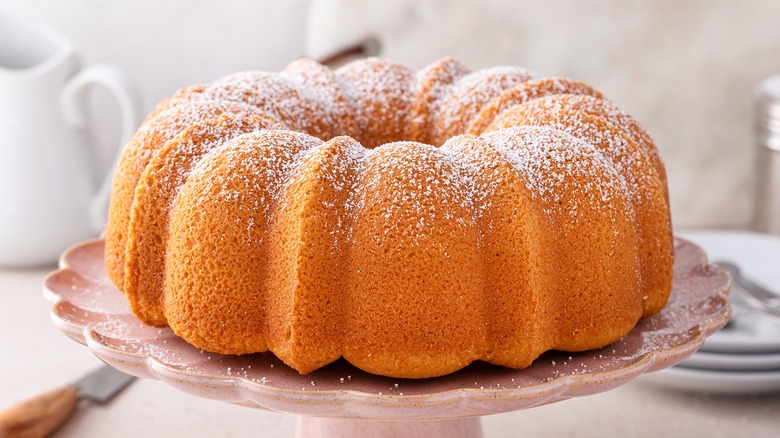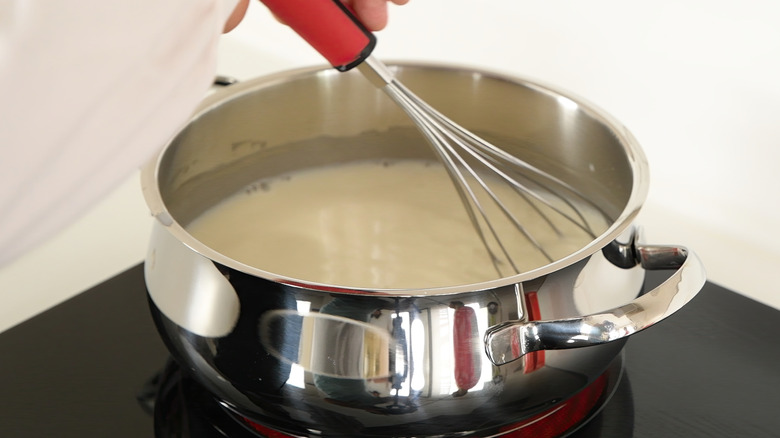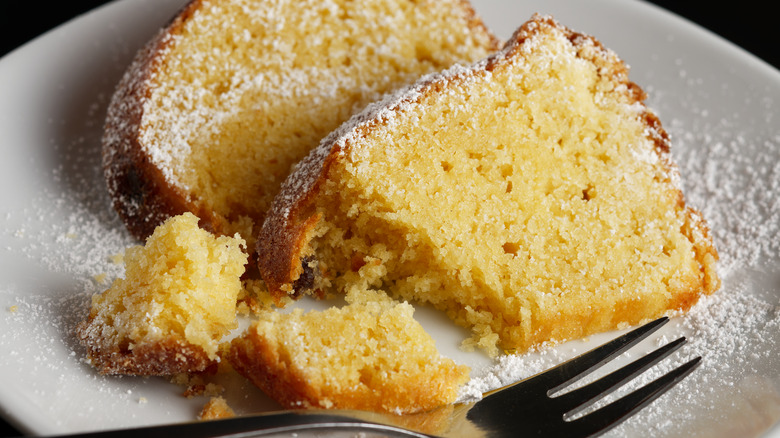Hot Milk Cake Is The Perfect Way To Use Up That Gallon In The Fridge
If you're looking for a way to use up some leftover milk before it expires, hot milk cake may be just the recipe you need. The texture of the cake is similar to a sponge cake, though the finished bake takes on a slightly grainy texture. It gets its fluffy consistency from whipping eggs together prior to mixing, as well as a little bit of added baking soda.
As the name suggests, you'll need to add some heat to your milk before adding it to your batter. To heat it up, pour your milk into a saucepan on the stovetop. If you scald your milk, it could even help add some extra airiness to the bake. Turn your stove on medium heat, and stir the milk as it heats up. You'll want to let it cool to about 110 degrees Fahrenheit before adding it to the rest of your batter.
If you prefer to use your microwave for quick prep, you can also heat the milk that way. Just pour the liquid into a bowl and microwave in short intervals, stirring in between heating sessions. Once your milk has been heated to the correct temperature, it can be added to your cake batter.
Why does the milk have to be heated?
The reason the heated milk works well in the cake batter is that the warmth will allow the eggs in the cake batter to start cooking a little bit before you place the pan in the oven. This process is called coagulation. The egg proteins form into air pockets once they're heated, and those air pockets can act as a leavening agent in cake batter as it bakes.
Some recipes also suggest combining the butter with the milk before heating and allowing the mix to heat up until the butter has melted completely. This can add a little extra warmth to give your cakes that extra head start on baking.
Because the texture of the cake is similar to a sponge cake, it's pretty versatile in how it can be baked. The batter can be poured into traditional round cake pans and stacked as a layer cake, shaped in a Bundt pan, or spread in a sheet pan to make some cake bars. It can then be topped off with frosting, icing, fresh fruit, or ganache.
The origins of hot milk cake
The original inventor of the hot milk cake is unknown. A 1911 recipe was published under the initials "L.L.M." in the Chicago Tribune, calling for sugar, eggs, flour, salt, baking powder, and hot milk, all beaten together and poured into a pan. Other bakers took inspiration and made some alterations to the recipe through the years.
Ruth Ellen Church, former food editor for the paper, had her own column in the paper under the name of "Mary Meade." It was in this column in 1955 that she published her own recipe for hot milk cake using chocolate milk. In 1967, she revised the recipe, replacing the milk with evaporated milk.
If you aren't sure what to do with that leftover gallon of milk in your fridge, try heating a little bit of the beverage up to bake into a hot milk cake. The fluffy, crumbly texture of the sponge-like cake will make a deliciously versatile base for topping off with all your favorite cake finishes.


